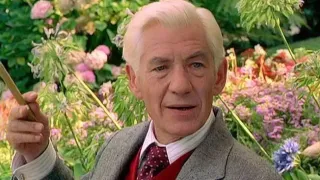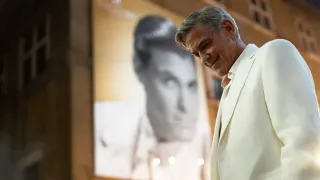
11 hours ago
Madonna’s Suitcase, Trump’s Jet, and the Queer Art of Surviving a Car Crash Interview: Ruby Wax Unpacks Her Wildest Celebrity Encounters
READ TIME: 3 MIN.
If there’s a pantheon for the patron saints of awkward interviews, Ruby Wax deserves to be canonized with glitter. The beloved comedian, interviewer, and unapologetic truth-teller has spent decades giving queer audiences exactly what we crave: unscripted chaos, cringe comedy, and a refusal to take even the most intimidating celebrities too seriously. This week, as Wax revisits her infamous sit-downs for the BBC’s “When Ruby Wax Met,” her stories are sparking new conversations about the queer art of holding space—even when the room is full of egos and the closet is full of skeletons .
Let’s start with the “car crash”—the Madonna interview that queer pop culture scholars have dissected like a RuPaul’s Drag Race lip sync. “That interview wasn’t going as well as I thought,” Wax admits, recalling how she and the Queen of Pop both seemed “confused” by the direction (or lack thereof) in their encounter . Was Madonna guarded, or was Wax too irreverent? Either way, the resulting friction is pure queer gold: two icons, both used to controlling a room, ricocheting off each other in a way that’s as uncomfortable as it is fascinating.
Then, in a move that would make any drag house mother proud, Wax upped the ante by raiding Madonna’s suitcase. “Her suitcase was there so I put on her clothes while she was out,” she confessed, turning an awkward moment into an act of sartorial rebellion . The audacity! The camp! It’s the kind of boundary-pushing that resonates with LGBTQ+ folks who know all too well the thrill and risk of trying on someone else’s armor. For queer viewers, Wax’s antics aren’t just comedy—they’re a wink to the disruptors and rule-breakers in all of us.
If the Madonna interview was a slow-motion car crash, Wax’s encounter with Donald Trump was a full-blown emergency landing. The story has become the stuff of legend: Wax gets invited onto Trump’s private jet, only to be unceremoniously ejected mid-interview—a moment she’s since described as witnessing “the point where the monster began” . Trump, even then, was already speaking about wanting to be president, and Wax, ever the provocateur, wasn’t shy about calling out the contradictions and bravado that would later define his political career .
But for queer audiences, the true resonance lies in the power dynamic: a brash woman, known for her outsider energy, challenging a man obsessed with control. Wax’s refusal to be cowed by Trump’s bluster—her insistence on making the interview funny, real, and just a little bit subversive—feels like a reclamation. It’s a reminder that queer voices have always had to navigate, and sometimes upend, the rooms where power is hoarded and authenticity is unwelcome.
Her account is peppered with details that verge on the surreal: after hours of banter, Trump “started to get worn down,” and in a final act of absurdity, he “tries to stab me with a banana” . It’s almost drag—political kabuki played at 33,000 feet. Wax’s experience isn’t just a celebrity anecdote; it’s a lesson in the queer gaze: looking at power, laughing at it, and refusing to play by the script.
As “When Ruby Wax Met” finds new viewers, it’s worth asking why these stories resonate so deeply with LGBTQ+ audiences. There’s something inherently queer about disrupting expectations, about refusing to be cowed by the intimidating, or about making a spectacle out of discomfort. Wax’s interviews are messy, unpredictable, and gloriously human—qualities that queer people often recognize in our own journeys through systems that weren’t built for us .
Her willingness to try on Madonna’s clothes, to laugh at Trump’s bravado, and to make pelvic floor exercises with Pamela Anderson into television gold is more than just entertainment. It’s a reminder that queer resilience is found in the ability to improvise, to challenge, and—most importantly—to keep laughing, even (or especially) when the stakes are high and the spotlight is blinding.
For younger LGBTQ+ viewers, Wax’s stories are a dispatch from a different era but with familiar themes: the search for belonging, the confrontation with power, and the magic that happens when someone refuses to play by the rules. These interviews, awkward and anarchic, are a kind of queer time capsule—proof that sometimes, the best way to survive a car crash is to grab the wheel, put on someone else’s jacket, and swerve into the unknown.
Wax’s legacy is a living archive of queer sensibility. Her interviews are not just about celebrities—they’re about the art of not fitting in, of surviving and subverting, of turning every disaster into a story worth telling. In a media landscape still obsessed with polish and perfection, her willingness to embrace the mess feels revolutionary. As she reminds us, sometimes the most powerful thing you can do is laugh at the absurdity of it all—and maybe, just maybe, try on Madonna’s clothes while you do it.






